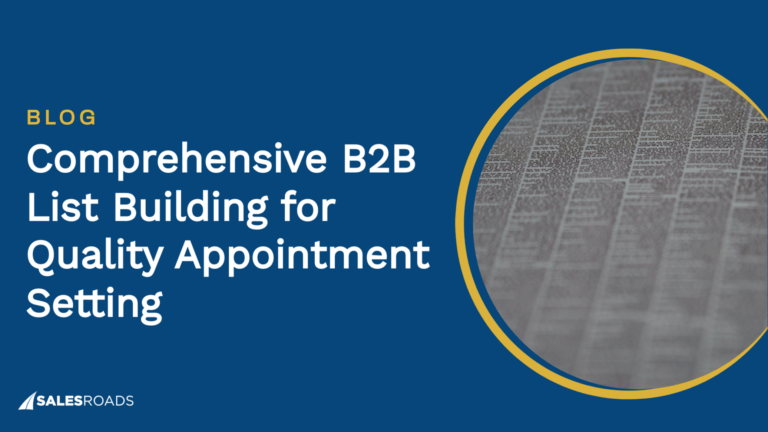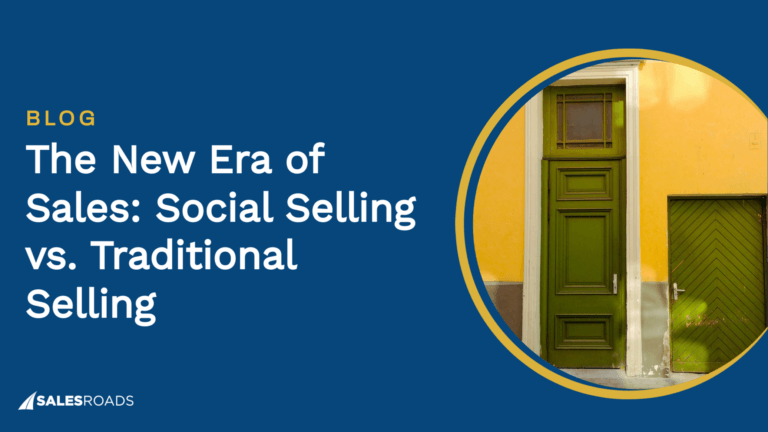As your revenue increases, your company must develop an efficient and scalable sales process to support it. Building a sales infrastructure that is seamless and repeatable is crucial to achieving sustainable business growth.
What is a Sales Process?
A sales process is a blueprint that guides salespeople on how to move prospects along the different phases of the buyer’s journey. A scalable sales process is:
- Adaptable: Trends and markets are ever-changing. Your sales process must be flexible enough to adapt to new technologies, integrations, and strategies to cater to customers’ needs and keep up with competitors.
- Clearly defined: Your sales team and other stakeholders must understand every stage of your sales process. This mitigates miscommunication and ensures alignment with other departments within the company.
- Customer-centric: Consumers are becoming more informed and have more options available to them every day. To stand out among your competitors, it’s crucial to cater to your target audience’s needs and pain points.
- Goal-oriented: Your sales process must contribute to achieving business objectives such as growth and increasing revenue.
Step-by-Step Guide on How to Develop a Scalable Sales Process from Scratch
Your sales process must cater to your company’s growing needs. These are the step on how to develop a scalable sales process:
Step #1: Clearly Define What a “Lead” is
A strong sales process provides customers with a positive buyer experience. To achieve that, you’ll first need to figure out who these customers are by clearly defining your “leads.”
A lead generally refers to a person or business that shows interest in your product or service. This interest can be expressed in various ways, and the specific definition of a lead will vary from company to company.
There’s no one size fits all definition of what a lead is. This often causes confusion among salespeople and other departments within the organization, affecting overall efficiency and productivity. This video will provide you with a general description of the different types of leads:
The first step to defining a lead is to create an ideal customer profile (ICP) and a buyer persona. An ICP refers to companies who’ll benefit the most from your offerings, while a buyer persona is a research-based fictional profile representing individual target consumers.
A clear definition of a lead allows you to determine the exact type of sales effort needed to move them along the buyer’s journey.
Step #2: Create a Sales Process Outline
Outlining your sales flow makes creating an adaptable, repeatable, and customer-centric sales infrastructure easy.
The sales process varies depending on the company’s needs and objectives, but it’s generally composed of the following stages:
Preparation and Research
Think of this stage as the foundation of your sales process. It allows salespeople to understand your products and services and their target customers.
Prospecting
Prospecting refers to the process of identifying potential customers. A common strategy used for this stage is lead generation, which involves attracting the attention of a specific customer demographic.
Lead Qualification
Not all leads generated are worth pursuing, which is why lead qualification is crucial. This process identifies high-value leads that are easier and faster to convert.
A common lead qualification strategy is cold calling, which entails calling prospects without previous interaction with your brand or offerings. If the lead fit’s the company’s target ICP or buyer persona, sales development reps will encourage them to book an appointment with an account executive.
Pitch or Presentation
In this stage, salespeople (usually the account executives) present the unique value of their offerings.
The data and insight collected during the preparation and research stage play a vital role in sales pitches. Account executives can use them to highlight your offerings’ unique value proposition without sounding too pushy.
Handling Objection
The most common objections raised by leads involve:
- Trust
- Money
- Need
- Urgency
To effectively handle these objections, your sales team must use their in-depth industry knowledge and excellent communication skills.
An efficient sales process helps salespeople prevent common objections by providing better buying experiences.
Closing Deals
In this stage, deals are finalized and leads are converted into customers. This is when your sales team will be sending proposals and negotiating terms.
For B2B transactions, this stage can take longer since multiple decision-makers are involved. A carefully crafted follow-up plan can help speed up the process, as it encourages leads to take actions.
When outlining your sales flow, indicate who is responsible for each stage. For example, sales development representatives handle the prospecting and research stage, while account executives focus on pitching and closing deals.
Step #3: Create a Sales Playbook
A sales playbook is a document that details:
- Product information and benefits
- Consumer pain points
- Specific sales strategies for every stage of the buyer’s journey
- Sales objectives
This document serves as a guide for your team on the best practices when implementing your sales process. It also clarifies instructions to mitigate mistakes and boost success.
Step #4: Track Key Performance Indicators (KPIs)
Tracking KPIs can help assess your sales process’s success (or lack thereof). These are essential metrics to keep an eye on:
- Lead-to-opportunity conversion rate
- Lead-to-sale conversion rate
- Quota attainment
- Customer acquisition cost
- Churn rate
- Average deal size
Aside from evaluating the effectiveness of your sales process, these metrics can also help in sales forecasting, allowing you to anticipate failures and successes.
Tips on How to Improve Your Existing Sales Process
The following tips can help boost the efficiency of your current sales process:
Conduct a Sales Process Audit
The first step to improving your existing sales process is determining which aspects are working and which need improvement. The best way to do this is to conduct a sales process audit. This will reveal:
- Funnel leaks: At what stage of the buyer’s journey do you lose leads, and what’s the common reason?
- Misalignments: Do your sales and marketing have the same end goals?
- Missed opportunities: Is every lead in your pipeline given the right amount of attention?
Once you have identified the problems, creating solutions will be a lot easier.
Leverage Technology
There are technologies specifically designed to speed up the sales cycle. Examples of these include:
- Account-Based Marketing Technology: These tools help salespeople identify which leads should be prioritized based on their level of interest. It also makes creating and crafting personalized engagement easier.
- Customer Relationship Management (CRM): Salespeople work with tons of data, which can be overwhelming. CRM helps them organize and keep track of these pieces of information quickly.
- Email Management Tools: Email is a widely used sales channel, but sending and keeping track of a campaign can be repetitive and time-consuming. By using email management tools, you can automate this task and reduce your salespeople’s workload.
- Sales Productivity Tools: Help streamline administrative sales processes, such as scheduling meetings with clients and other departments.
- Prospecting Software: Lead qualification tasks can be automated using this software. It has a wide range of functions, making time-consuming and repetitive processes easier and faster.
Don’t Be Afraid to Make Changes
Making tweaks or adopting new frameworks for your sales process can be challenging, but it’s necessary. Your sales team and customers will benefit from these adjustments, and your firm will expand in the long run.
Consult Your Sales Team
Your sales team has first-hand experience with your sales process’s efficiency. They are a great resource for insight into where you may make enhancements to your sales process.
There are several ways to get these valuable insights from your sales team; you can do individual interviews or ask them to fill out surveys. Not only will this help improve your sales process, but it can also make your employees feel heard, which is crucial in keeping them engaged and motivated.
Bottom Line
Building a scalable sales process from scratch is done through trial and error. By optimizing your sales process, you can speed up your conversion and provide a better quality experience for your customers.









